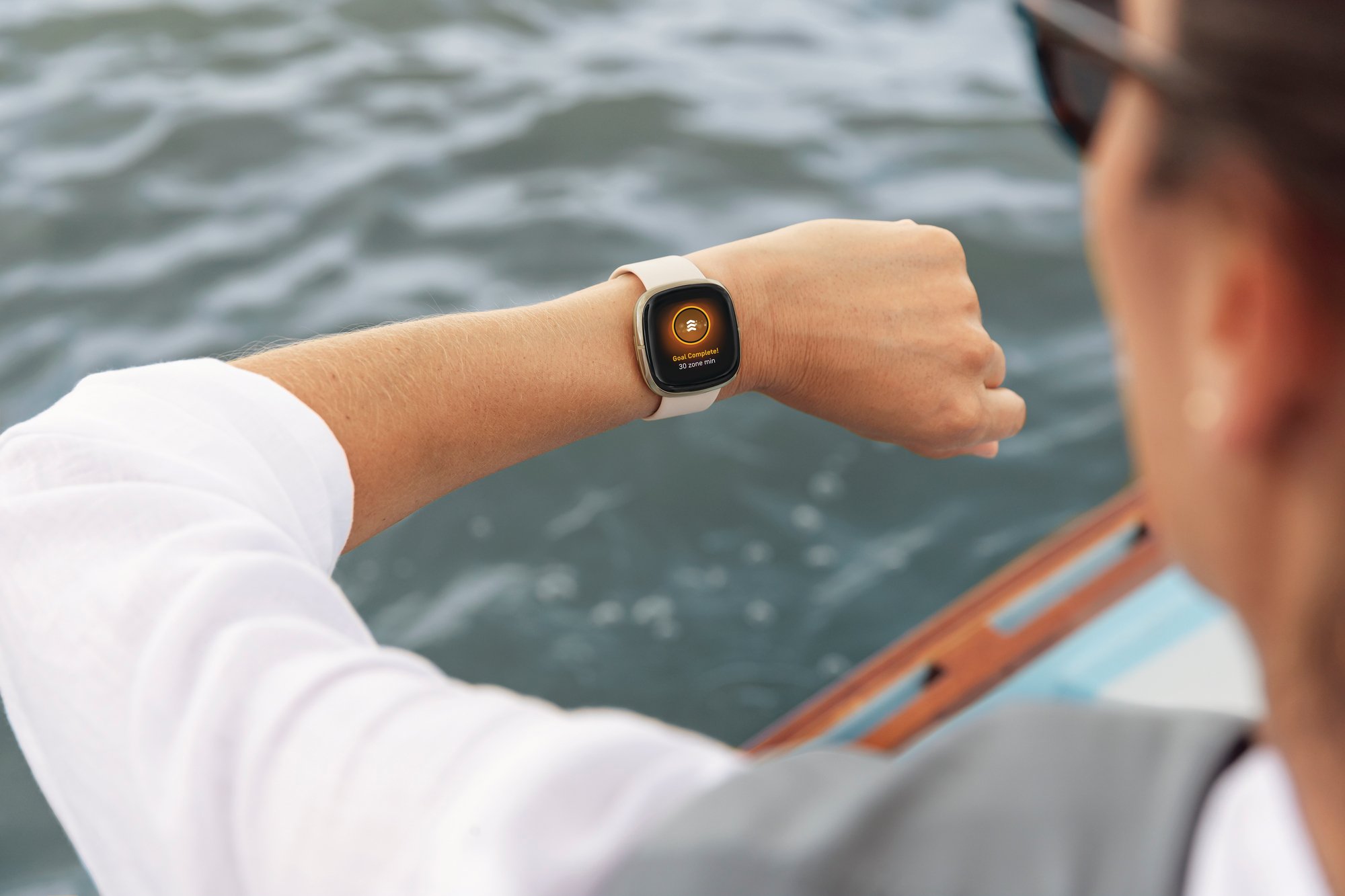Fitbit (FIT +0.00%) recently released a new software update that makes its Charge HR and Surge fitness trackers much smarter. The new "SmartTrack" feature automatically detects a wide range of activities, like walking, running, elliptical, aerobic workouts, swimming, kickboxing, basketball, and even Zumba. Its PurePulse heart rate tracking feature has been updated for higher accuracy during high-intensity workouts, and its updated mobile app now includes weekly exercise goals to "encourage people to embrace a more consistent workout routine."

Source: Fitbit.
Will these upgrades widen Fitbit's defensive moat against its growing list of competitors in the wearables market? Or is it only a matter of time before Fitbit's "new" features become standard in rival devices?
Why Fitbit needs a wider moat
Looking ahead, Fitbit faces two major threats -- low-end fitness trackers and full-featured smartwatches. In the low-end market, Xiaomi's market share soared from nothing to 17% between the second quarters of 2014 and 2015, according to IDC. That growth was fueled by its $15 Flex-like Mi Band. Xiaomi recently upgraded the Mi Band with a heart rate tracker, which the $100 Flex currently lacks, while maintaining the same price point.
In the high-end market, Apple's (AAPL 0.38%) share soared from zero to 20% during the same period, thanks to the arrival of the Apple Watch. Meanwhile, Fitbit's share fell from 30% to 24%, although total shipments rose 159% annually. The Apple Watch has a heart rate tracker, and its Activity app tracks how much time a user sits, walks, and exercises. The Workout app tracks running, walking, cycling, elliptical, rowing, and stair-stepping exercises, but it needs to be manually set before each exercise.
Last quarter, 79% of Fitbit's revenue was generated by the Charge, Charge HR, and Surge. This higher dependence on higher-end "sports performance" wearables means that low-end trackers from companies like Xiaomi can't simply kill Fitbit by wiping out the Flex. However, Fitbit's newer devices are sold at slightly lower margins than the Flex and other low-end devices, which caused Fitbit's non-GAAP gross margin to fall from 53.9% to 48.3% between the third quarters of 2014 and 2015.
Carving out a niche
Earlier this year, Generator Research estimated that the fitness tracker market will shrink from $2.3 billion in 2015 to $527 million in 2020. During that period, smartwatch revenues are expected to surge from $17.2 billion to $154 billion. Between these two markets, the firm expects a smaller niche of "sports performance" devices to gradually grow from $2.2 billion to $2.9 billion.
Fitbit is aiming the Charge, Charge HR, and Surge at that niche market, where it mainly competes against Garmin (GRMN 1.09%) devices like the Vivofit 2, Vivosmart HR, and Vivoactive watch. However, Garmin's fitness revenues (which include those devices and others) only rose 23% annually last quarter to $143 million. By comparison, Fitbit's total revenues rose 168% annually last quarter to $409 million.

Garmin's Vivofit 2, Vivosmart HR, and Vivoactive. Source: Garmin.
Updating its software with automatic workout tracking could defend this niche market from potential challengers. Only Garmin's Vivoactive watch has a built-in app for different sports, and even it needs to be manually activated like Apple's Workout app. If Fitbit's SmartTrack feature works as advertised, it could widen its technological lead over Garmin's devices, the Apple Watch, and other competitors.
But how long can Fitbit thrive?
Fitbit's big software update is a smart move, but it's unclear how long it will keep its Charge and Surge devices ahead of the technological curve. As Apple Watch usage rises, developers will likely create comparable apps with similar features. Developers will also likely introduce similar apps to the Android Wear ecosystem.
As more smartwatch makers enter the market with more competitive features, prices will decline and the lines between "sports performance" devices and smartwatches could be blurred. When that happens, Fitbit will need to rely on its brand's strength to keep selling devices in an increasingly crowded wearables market.







